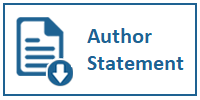Image Splicing Forgery Detection using Error Level Analysis and CNN
DOI:
https://doi.org/10.31937/si.v14i2.3439Abstract
The issue of image forgery through splicing has become increasingly relevant in the current digital era. Splicing involves the manipulation of images by combining parts of two or more different images to create a deceptive composite image. This technique can be employed for various purposes, including the dissemination of false information, damaging someone's reputation, or even creating confusion in specific contexts. Several techniques used to detect splicing involve statistical analysis, color analysis, and texture analysis. Additionally, artificial intelligence developments, such as deep learning, have been applied to enhance detection capabilities. In this study, we employed a Convolutional Neural Network (CNN) model to identify image deviations caused by splicing. Optimization was performed on the convolutional layers of the model to improve CNN performance. The integration of Error Level Analysis (ELA) was also implemented to aid in identifying splicing forgeries, where portions of one image are combined with parts of another. Areas that have undergone splicing may exhibit noticeable differences in error levels. The dataset utilized for this research was sourced from DVMM and CUISDE. The validation accuracy results for our CNN model before incorporating ELA were 61% for DVMM and 74% for CUISDE. After adding ELA, the CNN model demonstrated improved detection accuracy, achieving validation rates of 72% for DVMM and 71% for CUISDE.
Downloads
Downloads
Published
How to Cite
Issue
Section
License
Authors retain copyright and grant the journal right of first publication with the work simultaneously licensed under a Creative Commons Attribution-ShareAlike International License (CC-BY-SA 4.0) that allows others to share the work with an acknowledgement of the work's authorship and initial publication in this journal.
Authors are able to enter into separate, additional contractual arrangements for the non-exclusive distribution of the journal's published version of the work (e.g., post it to an institutional repository or publish it in a book), with an acknowledgement of its initial publication in this journal.
Copyright without Restrictions
The journal allows the author(s) to hold the copyright without restrictions and will retain publishing rights without restrictions.
The submitted papers are assumed to contain no proprietary material unprotected by patent or patent application; responsibility for technical content and for protection of proprietary material rests solely with the author(s) and their organizations and is not the responsibility of the ULTIMA InfoSys or its Editorial Staff. The main (first/corresponding) author is responsible for ensuring that the article has been seen and approved by all the other authors. It is the responsibility of the author to obtain all necessary copyright release permissions for the use of any copyrighted materials in the manuscript prior to the submission.















